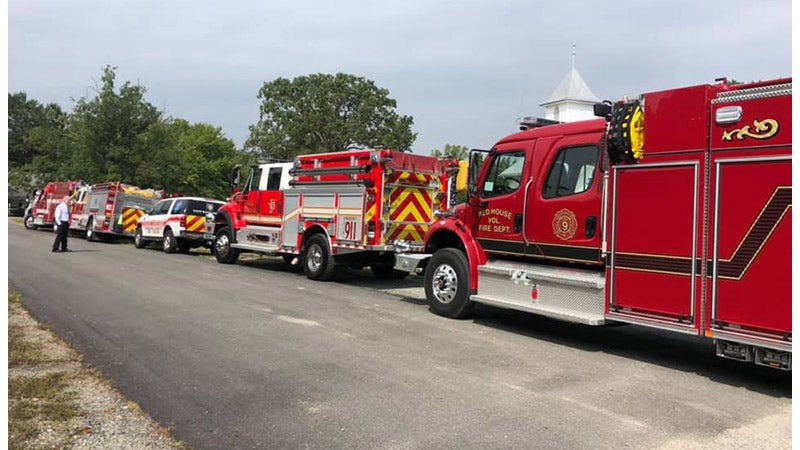Study finds Charlotte County fire, EMS should combine
Published 4:00 pm Thursday, December 22, 2022
|
Getting your Trinity Audio player ready...
|
During a special called meeting of the Charlotte County Board of Supervisors (BOS) on Dec. 12, members heard firsthand the outcome of a Fire and EMS study and are now faced with several decisions, one that could combine the two organizations.
The study was conducted at no charge to the county in September by the Virginia Fire Services Board in an effort to provide technical assistance and advice to the fire and EMS departments and the county.
Vice-chair of the Virginia Fire Services Board, Abby Johnston, addressed the BOS with the study’s findings.
“The fire and EMS study provides broad recommendations for the local jurisdiction to review and to customize to benefit their citizens, fire and EMS organizations and the local jurisdiction as a whole,” Johnston said. In addition to a review of information provided to us by the County Administrator’s Office, the study process involved in-person meetings with stakeholders throughout your system and a public hearing to allow community members to speak.
‘Under one central umbrella’
Johnston said the study recommended formally establishing and codifying Charlotte County Fire and EMS and including all agencies under one central umbrella and appointing a system director to oversee and coordinate the system.
“This would arguably be one of the most essential recommendations that our board has to offer,” Johnston said. “This would create greater operational consistency and allow for centralized equipment acquisition and training to support efforts already in place by individual agencies.”
Johnston said one of the first steps should include formal adoption and codification of all agencies via a County government ordinance.
“In no way is centralized authority an attempt to reduce or alter the rich histories and cultures of the agencies in Charlotte County,” Johnston said. “Rather, it’s an essential step toward preserving agencies through creating strong guardrails around the system, increasing accountability and providing oversight for the provision of services while lessening the administrative burdens of independent volunteer operation.”
More changes recommended for Charlotte County
In addition, the 28- page study suggested that a fire and EMS training captain/ volunteer coordinator position be added to the schedule and coordinate training for individual agencies and multi-agency drills to improve operational proficiency.
“This person would serve as the liaison to access training resources through both the office of EMS and the Virginia Department of fire programs,” Johnston said.
The Virginia Fire Services Board also recommended hiring a public safety director that would have operational authority for both fire and EMS departments to work to resolve any issues.
When it came to the local fire department, little was addressed; however, when it came to issues with the county’s rescue squad, several items were brought up.
“Based on the information received during the interviews and comments shared at the public hearing, the study committee is concerned that the Charlotte County Rescue Squad (CCRS) had lost the confidence of the residents of the county,” Johnston said.
Keeping Charlotte County rescue afloat
In February, the BOS was faced with approving a substantial amount of funds to help keep the rescue afloat.
County officials say overspending for the past five to seven years had put the Charlotte County Rescue Squad in a financial bind.
So much, in fact, that the BOS has had to appropriate over $100,000 in just two months. The overspending eventually led to county officials asking CCRS Captain Bill Mayhew to resign.
Following a troubling two months, the CCRS seemed to be turning its financial woes around when a leadership change was made. Sally Pyle, who has been involved in the EMS field for many years, was hired by the rescue squad to handle billing for Medicare, Medicaid and insurance.
During the work session, Pyle presented her findings just after working with the squad for two weeks and began to work to clean up the squad’s financial troubles.
During the Dec. 12 meeting of the BOS, Pyle told members that $120,000 in debt had been paid off since March, and to date, the CCRS has received $50,000 in donations.
CCRS Captain Matthew LaMotte told the BOS that they were getting 33% of the money back in billable calls from insurance currency back in March. That rate is up to 59%
“Unfortunately, everything that comes in is going out to payroll,” LaMotte said.
According to LaMotte, the CCRS is paying out a lot in overtime because there are not enough employees to fill the crew 24-hour service that is provided to citizens.
However, the Virginia Fire Services Board study suggests that CCRS needs to add an additional crew due to the county size and location of its two squad buildings.
Both Pyle and LaMotte said the CCRS is paying $5,000 in overtime each week and the call volume is just not there to have a third 24-hour crew in operation.
The BOS made no decision on the study recommendation during the Dec. 12 meeting.
“Nothing is going to change overnight,” said BOS Chairman Gary Walker. “This is a one to three year project.”



